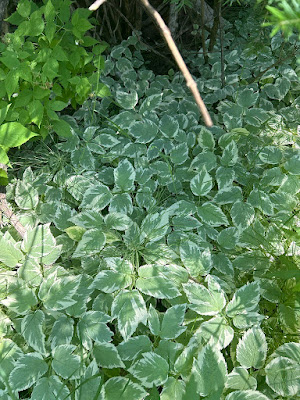Jelly Lichens
Jelly lichens (family Collemataceae) are one of my favorite lichen families. As their name suggests they have a gelatinous thallus that often swells when wet which makes them quite unique. They have a dark color, usually black, brown, or blue due to their photobiont being a cyanobacteria in the genus Nostoc. So these lichens are able to fix atmospheric nitrogen, another very cool aspect about them. Many of the species in this family are quite rare in Minnesota, a handful of which I have seen, many more I hope to find in habitat at some point.
While exploring today a found a couple really amazing specimens. The most exciting of which is shaly jelly lichen (Enchylium polycarpon). John Thayer says that this location is the 3rd one that he knows of in MN. This lichen was growing on a somewhat sheltered, moist rock face right along the shore of Lake Superior. As I said earlier this species has Nostoc as the photobiont; there were many colonies of free-living Nostoc growing amongst a handful of lichens. The abundance of Nostoc and the (mostly) lack of lichen made me curious about how the lichen relationship between the fungus and cyanobacteria form. If the Nostoc was doing so well, why didn't the fungus colonize more of them to form a lichen. Or does the cyanobacteria colonize the fungus already growing on the rock, or is it more complex than that. Obviously something in the recipe was missing.
A third species I found was something in the genus Lathagrium. By that time my camera was dead so I didn't get a picture, but it looked like one I have encountered before on a north facing cliff.
While walking to Goldrock Point, I came across an interesting patch just a few yards in the forest where many cultivated plants were growing. Joe told me that before the area was a state park the lighthouse operators had quite a bit of area that they tended and apparently had a few gardens in the landscape.
I encountered a handful of other rare and interesting species.














Comments
Post a Comment